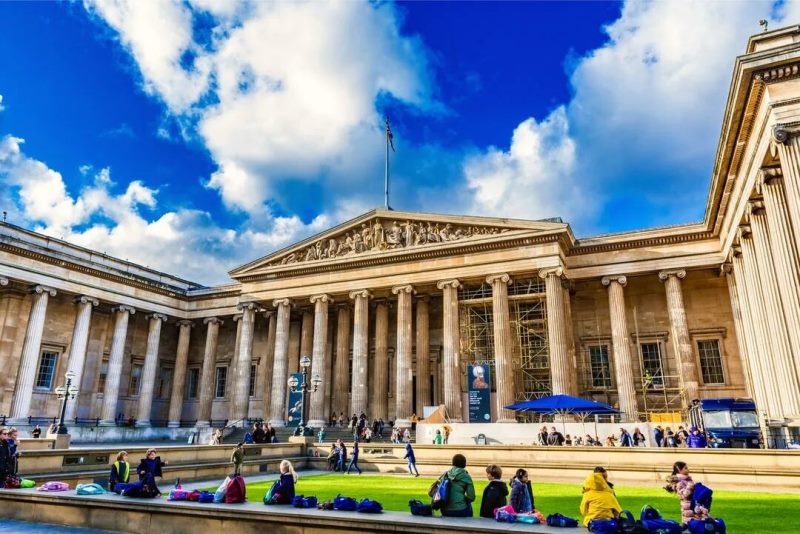 British Museum in London: photos, description of exhibitions
British Museum in London: photos, description of exhibitions
London is an amazing city that has collected a huge amount of cultural wealth, such as museums, exhibitions and galleries, which makes it incredibly attractive to tourists from different parts of the world. One of the most visited places in London is the British Museum, which ranks second in the world in terms of the number of exhibits, second only to the Louvre. This unique museum includes 94 galleries, the total length of which is as much as 4 kilometers. And this is just a small part of the fascinating cultural attractions that await anyone who decides to visit London.
History and architecture of the British Museum
The British Museum has an inherent uniqueness and majesty, both historically and architecturally. The beginning of its history is associated with a private collection of artifacts collected by the English doctor and passionate collector of antiquities, traveler and naturalist, Hans Sloan. In his will, Hans Sloane gave his collected artifacts to King George II for a nominal fee. At that time, the collection consisted of more than 70,000 items.
The British Museum was officially founded on June 7, 1753 by a special Act of Parliament. In subsequent years, Parliament purchased exhibits from collectors to add to the museum’s collection. Significant additions included the Harley Library and the Cotton Library. In 1757, the Royal Library also joined the museum’s collection. This rich collection of artifacts included not only artifacts, but also valuable literary works, including the only known copy of Beowulf.
In 1759, Montagu House opened its doors to the first visitors invited to the official opening of the British Museum. However, this museum was not accessible to the general public; only a select few had the privilege of getting here. Mass visits to the British Museum would have to wait another hundred years, but we’ll talk about that later.
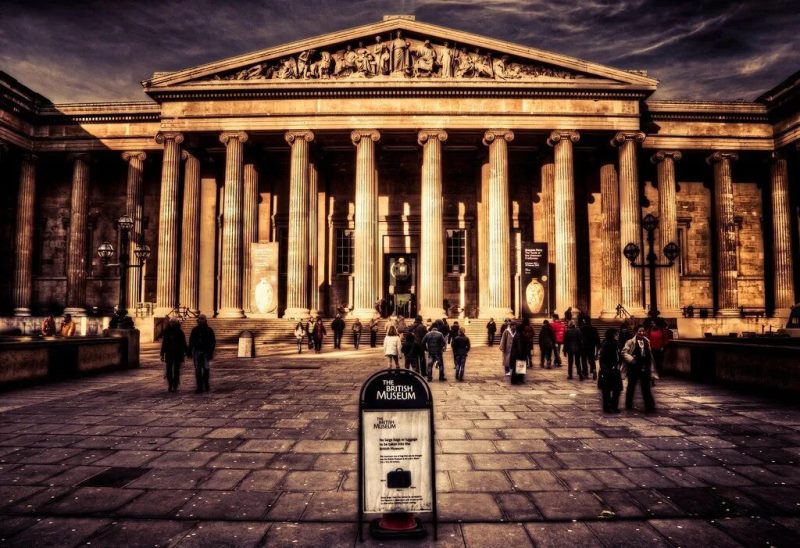
At the end of the 18th and beginning of the 19th centuries, the museum acquired famous collections, which remain its most valuable exhibits today. This includes a collection of antique vases collected by Hamilton, minerals from Greville, and marble sculptures from the Parthenon acquired by Lord Elgin. These artifacts have become real treasures of the museum collection.
The Anglo-Egyptian War played an important role in the development of the British Museum, after which Egypt became a British protectorate. During this time, many artifacts, works of art, and treasure were removed from Egypt, although this was not always done legally.
The collection was constantly expanding, and a need arose to organize the museum according to thematic areas. Over the years, the available space became increasingly limited. In 1823, work began on the construction of a separate building for exhibits. Architect Robert Smerk’s design for the British Museum was designed in a neo-Greek style and featured 44 Ionic columns on the south façade.
Construction lasted more than 30 years, and in 1847 the doors of the British Museum opened to the public. The museum’s pediment was completed in the 1850s under the direction of Sir Richard Westmacott. Initially, the pediment was intended to depict the “Progress of Civilization,” but this idea seems outdated today. Instead, the architect decided to imagine progress in a new way. If you look carefully, in the left corner you will notice an uneducated man emerging from behind a rock. He explores fields of art such as sculpture, music and poetry, becoming “civilized”. All of these fields are represented by humanoid figures, starting from the left side: Architecture, Sculpture, Painting, Science, Geometry, Drama, Music and Poetry.
However, work on the project did not stop. In 1857, the Great Courtyard was built, with a central Round Reading Room.
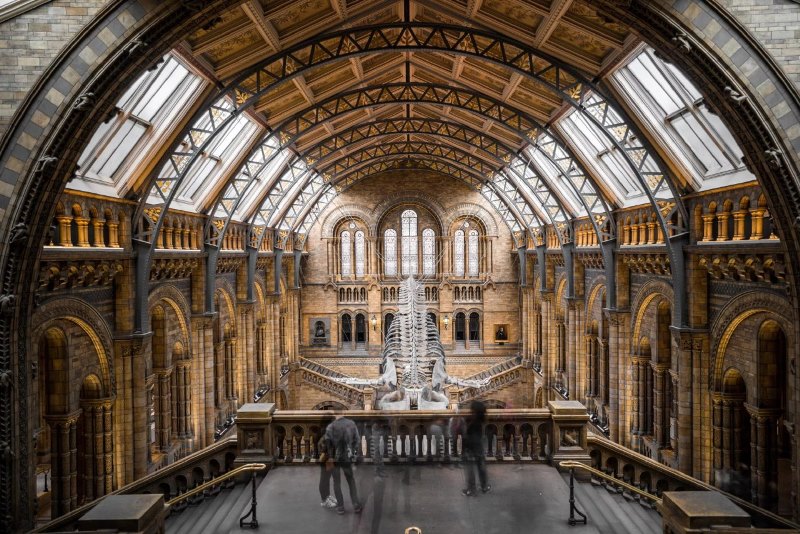
By the beginning of the twentieth century, the museum had accumulated a significant number of exhibits brought from the Middle East. They were the result of archaeological excavations in Mesopotamia. Later, part of the collections was redistributed to the Natural History Museum, and in 1972 the British Library became an independent institution, but traces of its presence can be found in the form of the above-mentioned reading room. In 2000, architect Norman Foster redesigned several rooms and created a glass dome over the Courtyard.
Today the British Museum’s collection numbers a staggering 13 million objects. Naturally, it will take more than one visit to see them all. But it is definitely worth noting that visiting this attraction is a mandatory event.
Sections of the British Museum and their famous exhibits
The British Museum is divided into six thematic sections, including archaeological and cultural artifacts from different countries and eras.
Ancient Egypt and Nubia
In this section you will discover an impressive collection of sarcophagi and mummies, including even the mummy of Cleopatra. Also on display here is the obelisk of Pharaoh Nectanebo II, the mathematical papyrus of Ahmes, the archive of the Amarna tablets in the amount of 382 and 95 copies, a fragment of the Sphinx’s beard, and the famous Rosetta Stone – a stone slab on which identical texts are carved in ancient Greek, ancient Egyptian demotic and hieroglyphic languages.
Africa, East and South Asia, Oceania, Mesoamerica
This section features Benin bronzes, the Diamond Sutra, the Book of Fortune-telling, Kanishka stupas and a collection of Chinese porcelain from the Percival David Foundation. Also here you can see the ancient Chinese scroll “Instructions of the Senior Court Lady”.
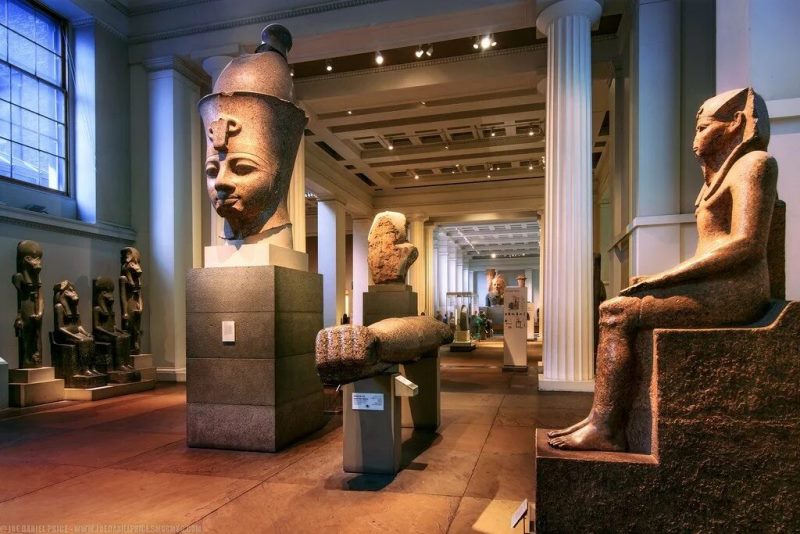
The Ancient East
This section is intended for those who are interested in the culture and archeology of the East. Among the exhibits are the cylinder of Cyrus, the prism of Sennacherib, jewelry of the priestess Shubad, paired figurines “Rams in the Thicket” dated 4500 years ago, a collection of bas-reliefs and the Balavat gate of Shalmaneser III.
Ancient Civilizations: Greece and Rome
This collection features fascinating exhibits, among which special attention is given to fragments from the archaeological excavations of the Palace of Knossos, unique fragments of the frieze of the Temple of Nike Apteros, as well as a priceless frieze from the Temple of Apollo at Bassae. In addition, you can find the famous Warren Cup, the Portland Vase and marble works of art from the Elgin Acropolis.
Art and Treasures of Europe
Treasures here include the gold cup of Charles V, the impressive cape from Mold, and the unique Franks Casket. The collection also includes ancient chess sets from the Isle of Lewis, Fuller brooches and valuable Anglo-Saxon treasures. Of particular interest are the remains of Lindow Man, who passed away during the Iron Age.
World of Graphics and Engravings
The gallery is proud of its collection of famous prints, including “The Disasters of War” by Francisco Goya, graphic drawings by great masters of art such as Raphael, Albrecht Durer, Michelangelo, William Blake, Leonardo da Vinci and Rembrandt.”
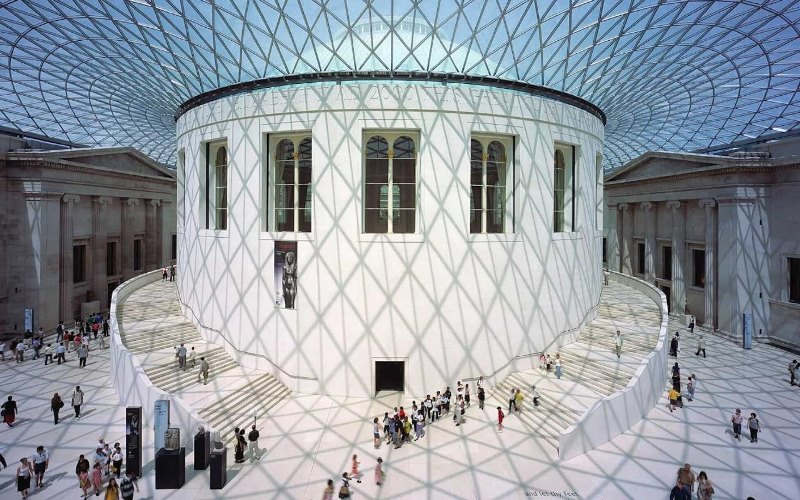
Information for visitors: location, opening hours and entry prices
British Museum address: Great Russell Street, London WC1B 3DG.
Nearest bus stop: Montague Street (Stop L).
Nearest metro stations: Tottenham Court Road, Russell Square, Holborn.
Entrance to the British Museum: free, except for temporary exhibitions. The museum also provides the opportunity to make donations in special boxes where tourists can leave one or two pounds to support its activities.
Schedule: The British Museum is open to visitors daily from 10:00 to 17:30, and on Fridays additionally from 10:00 to 20:30. Please note that some showrooms may be temporarily closed without prior notice.
It’s best to check the museum’s official website for more information on opening hours for individual rooms and temporary exhibitions.
On the grounds of the British Museum you can also visit a gift shop and two cafes where you can grab a bite to eat after wandering the galleries.
Half an hour’s walk from the British Museum is Westminster Abbey, which is also worth a visit for a full introduction to this wonderful city. To enjoy all London has to offer, it is recommended to stay for at least a week. We always have good hotels in London, most of which are located in close proximity to major attractions.